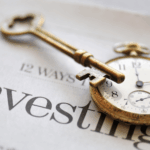Recent data highlights a noteworthy trend in consumer behavior—an increase in retail spending, with credit cards playing a central role. As the economic landscape shifts, consumers are demonstrating confidence by spending more using credit cards, which has contributed to a slight rise in loans among major card issuers. This development reflects broader changes in consumer sentiment, influenced by external factors such as interest rates and political uncertainty. Monitoring these financial patterns provides insight into the ongoing adjustments in consumer spending habits.
During previous months, consumers exhibited cautious spending behaviors due to fluctuating economic conditions and uncertainty surrounding interest rates. However, recent reports suggest that the easing of these rates has encouraged a more optimistic outlook, leading to increased consumer expenditures. Credit card usage has become a preferred method for many, indicating a shift in financial strategies among consumers. The rise in retail sales showcases a potential rebound in consumer confidence, albeit accompanied by a slight increase in delinquency rates, which warrants attention.
Why Are Delinquency Rates Rising?
Delinquency rates, reflecting the percentage of credit card users failing to make timely payments, have experienced an uptick to 2.99% from 2.88% in August. This increase suggests a need for caution among both consumers and financial institutions as they navigate the complexities of credit management. While net charge-offs, representing loans deemed uncollectible, have decreased slightly, the increase in delinquency rates could signal potential financial stress for some consumers. Despite these challenges, J.P. Morgan Chase has managed to maintain the lowest levels of charge-offs and delinquencies, even below pre-pandemic levels.
How Is Consumer Sentiment Shaping Financial Dynamics?
Consumer sentiment has improved, driven by factors like easing interest rates, according to the University of Michigan’s Survey of Consumers. The survey’s index level reached its highest since April 2024, revealing a more favorable perception of buying conditions. This sentiment shift suggests that consumers might feel more financially secure, impacting their willingness to spend and utilize credit.
“All year, consumers have repeatedly told us that the trajectory of the economy hinges on who becomes the next president,” commented Joanne Hsu, indicating the potential volatility in consumer expectations post-election.
Given these dynamics, financial institutions are closely monitoring consumer behavior and credit trends.
Capital One’s recent earnings call provided additional insights into consumer credit behaviors. CEO Richard Fairbank noted a 6% year-over-year increase in card loan balances, highlighting the sustained reliance on credit. CFO Andrew Young expressed optimism about improving credit outlooks, driven by stable credit trends. Despite a 0.22% increase in their 30-plus delinquency rate, Capital One remains confident in consumers’ financial stability, emphasizing the importance of monitoring these trends to understand broader economic implications.
The interplay between consumer behavior, economic factors, and credit management remains a critical area of focus. The current rise in retail spending, coupled with increased credit card usage, reflects evolving financial dynamics influenced by both internal and external factors. Understanding these shifts is essential for financial institutions and policymakers as they adapt to changing consumer needs and economic circumstances. While consumer sentiment shows signs of recovery, ongoing monitoring and strategic responses will be crucial in navigating potential challenges in the coming months.









